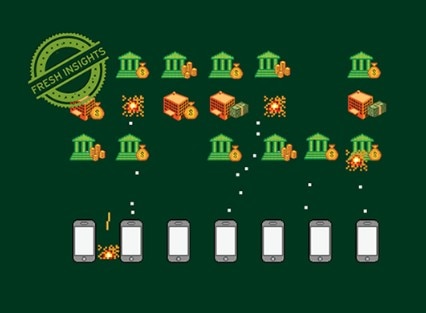During the Great Financial Crisis, legacy banks turned their focus to cost and capital optimization to help drive profitability amid a backdrop of slowing revenue growth. New regulations and changing business practices meant that technology investment was diverted towards regulatory and compliance challenges. While this was happening, smaller ‘challenger banks’ began to emerge driven by FinTech startups. These challenger banks were designed around the digital revolution and were able to leverage data insights via agile technology stacks. With these insights, they offered a customer personalization in their financial services and a fully digital banking experience.
As noted in the report that follows, legacy banks often have data that is stuck in multiple silos supported by core banking technology that was literally built in the age of black and white television. Manual intervention is high, which slows down operating speed, reduces flexibility, increases costs, and ultimately degrades efficiency and experience. Because a lot of digital technology isn’t part of core banking technology, challenger banks tend to be quicker at incorporating new products and processes onto their platforms and help to easily connect with third-party products — offering more choices to the end user.
Three types of challenger banks have emerged: (1) standalone challenger banks, which are primarily FinTech companies leveraging technology and data to streamline retail banking by offering better convenience and pricing; (2) incumbent-led challenger banks, which are started within legacy banks through investment in technology and by creating new digital-only banks; and (3) BigTech-led challenger banks, which are created through GAFA (Google, Apple, Facebook, and Amazon) and BAT (Baidu, Alibaba, and Tencent) and who can use their vast networks to acquire customers quickly as they branch out into financial services.
The challenge for incumbent banks is that while digitalization can lower costs by 30-50% (primarily through a decline in full-time employees as technology disintermediates workers), new competition and greater transparency are likely to lower revenues by 10-30%. We expect the digital disruption risk to start in payments and then widen to other financial products. The tipping point for incumbent banks is if their core businesses of savings and loans are impacted.
Creating an ‘incumbent challenger’ sounds like an oxymoron, but as legacy banks recognize the threat that new entrants into banking are posing to revenue and customers, they need to reinvent themselves and reimagine banking. This involves legacy banks partnering with technology companies to create effective joint ventures as well as moving into more disruptive technology and business models to transform themselves into digital competitors
By creating their own Bank X, we believe legacy banks can transform themselves from slow moving caterpillars to agile butterflies.
Is your bank giving you the best customer experience? Has it embraced the digital age like other services you deal with daily? A substantial number of new entrants into the banking sector think that answer is no and that they can provide a new banking model using technology and digital channels to deliver a better digital customer experience.
Click here to view the report in full.
Subscribe to Citi GPS
Keep up to date with our latest insights.


